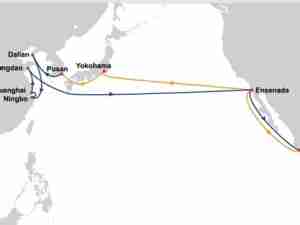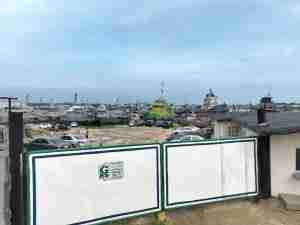Following a nine percent surge in cargo last year on the St. Lawrence Seaway, a more moderate gain of perhaps three percent for 2007 was anticipated by Seaway officials at the recent opening of commercial navigation following the traditional winter closing. This more modest estimate stems from an expected slowdown, at least for a few months, of steel imports from Europe and other demand factors related to the sharp downturn of the US housing market.
However, Seaway authorities in the United States and Canada are pursuing their efforts to broaden the waterway's cargo base through incentives to attract new cargo, through trade missions, by promoting new shortsea initiatives, and by expanding representative offices abroad.
On the list for a forthcoming trade mission staged by the US Saint Lawrence Seaway Development Corporation and Canada's St. Lawrence Seaway Management Corporation (SLSMC) is South America, following previous missions in the past few years to Asia and Europe.
As part of the Seaway's Hwy H2O market campaign abroad as a gateway to the industrial hinterland of North America, Richard Corfe, President and CEO of the SLSMC, disclosed that establishing an office in China this summer would be the next step on the heels of an office already established in London.
'At the same time, we are continuing to work with the Port of Halifax on a potential (container) feeder service. There is more and more interest in finding alternatives to congested ports on both coasts,' Corfe said in a recent interview.
The Seaway's opening on March 20th on the Welland Canal established a record for the earliest opening date since the Seaway was launched in 1959. The Montreal-Lake Ontario section opened on March 21.
In 2006, Seaway traffic climbed to 47.2 million metric tons, its highest level since 1998. The biggest factors were the marked jumps in grain (from 9.8 million tons to 11.5 million tons) and steel-led general cargo (from 3.2 million tons to 4.6 million tons).
'We don't see 2007 shaping up quite as good as 2006,' said Paul Pathy, Vice-President and General Manager of Federal Marine Terminals, part of Fednav, Ltd., largest ocean-going user of the Seaway. 'Steel looks slow coming in as producers (in the Great Lakes) are working down inventories from last year and prices in European mills remain high. But we see signs of life around mid-year.'
Wayne Smith, Vice-President, Marketing and Vessel Traffic, Seaway Marine Transport, indicated that all the 22 self-unloaders in the fleet were fully employed when the season began, as were most of the 12 gearless bulk carriers. 'Things look pretty good from a business perspective, and we certainly appreciated the early start of the season.'
The carry-over grain from last year, he said, was of good quality for export shipments into Europe, the Mediterranean and North Africa.
Meanwhile, efforts are continuing to start-up several truck ferry projects across the Great Lakes. The main impediments have centered around regulatory and customs issues in Canada and the United States. The recent introduction of a new Bill in the US House of Representatives that would exempt shortsea shipping services across the Great Lakes from the Harbor Maintenance Tax is regarded as a step in the right direction. It remains to be seen if this Bill is passed later this year.









